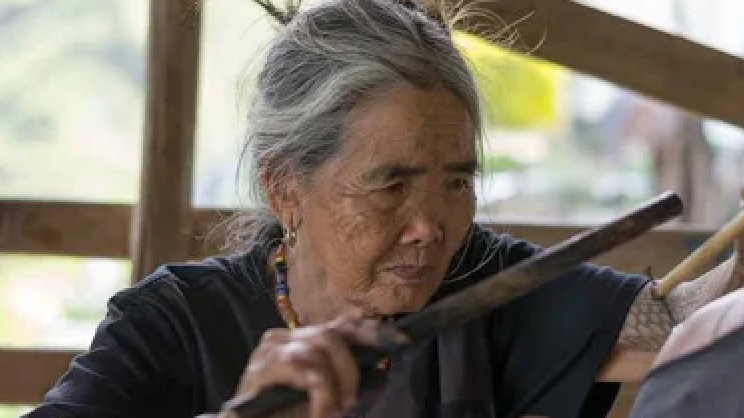Getting a Tattoo? Try One Etched by the Philippines’ Oldest Living Mambabatok 'Apo Whang Od'

In a remote mountain village in the northern Philippines, the sound of a small bamboo stick tapping against skin echoes softly in the morning air. The rhythm is steady, ancient, and mesmerizing — a heartbeat of tradition that has pulsed through generations. At its center is a tiny, tattooed woman with a knowing smile and eyes that have witnessed a century of stories. Her name is Apo Whang-Od, and at over 100 years old, she is the oldest living mambabatok — a traditional Kalinga tattoo artist — and a living link to a vanishing art form.
A Living Legend in the Cordilleras
High in the mountains of Buscalan, a remote village in the province of Kalinga, Apo Whang-Od (pronounced Fang-Od) has become a cultural icon and an unlikely global celebrity. For most of her life, she tattooed the headhunters and warriors of her Butbut tribe — men who earned the right to wear ink as a mark of bravery and victory. Women, too, received tattoos, often as symbols of beauty, fertility, or social status.
Back then, a tattoo was never a fashion statement. It was identity — a sacred mark woven into the skin as part of the tribe’s living history.
Today, the warriors are gone, but the tradition remains. Instead of battle scars, Whang-Od now inks the arms and legs of travelers from around the world, many of whom endure long, winding roads and steep mountain trails just for the privilege of being tattooed by her hands. Each tap of her bamboo stick is a thread connecting past and present — and each tattoo a reminder that some art forms are worth preserving.
Inked by Tradition
Whang-Od’s technique is known as batok, an indigenous tattooing practice passed down through oral tradition. There are no tattoo machines here — only a pomelo thorn, a bamboo stick, and a mixture of charcoal and water. With a practiced hand, she dips the thorn into the ink, positions it over the skin, and taps it rhythmically into place.
The process is simple but not painless. Each mark is a deliberate act, each symbol steeped in meaning — from centipedes and rice terraces to sun and mountain motifs, all drawn from the tribe’s rich connection with nature.
And though Whang-Od now works on tourists instead of tribal warriors, she insists the tradition remains sacred. “Batok is our heritage,” she once told visiting journalists. “It is who we are.”
A Journey Worth the Ink
Reaching Whang-Od is part of the pilgrimage. Travelers make the 10- to 12-hour trip from Manila to Buscalan, followed by a trek up steep paths to reach the village perched in the Cordillera mountains. There are no neon-lit studios here — just humble wooden houses, panoramic views, and a palpable sense of history in the air.
The wait to get tattooed can stretch for hours, but few complain. After all, how often do you have the chance to receive a mark of identity from someone whose hands have practiced the same art for more than eight decades?
The Future of Batok
Now in her twilight years, Whang-Od has ensured that her art will outlive her. She has been teaching her grandnieces, Grace and Elyang, the sacred practice — a move that bridges the gap between old and new. With them, the legacy of batok will continue, carried forward by a new generation even as the world around Buscalan changes.
More Than Just a Tattoo
A tattoo from Apo Whang-Od is more than ink on skin. It’s a story — one that began long before tattoo parlors and Instagram hashtags. It’s a mark of resilience, identity, and connection to a culture that refuses to be forgotten.
So if you’re thinking about getting a tattoo, skip the studio lights and electric buzz. Instead, follow the mountain trail to Buscalan, and let a century-old pair of hands etch history onto your skin — one tap at a time.
 Add Row
Add Row  Add
Add 




Write A Comment